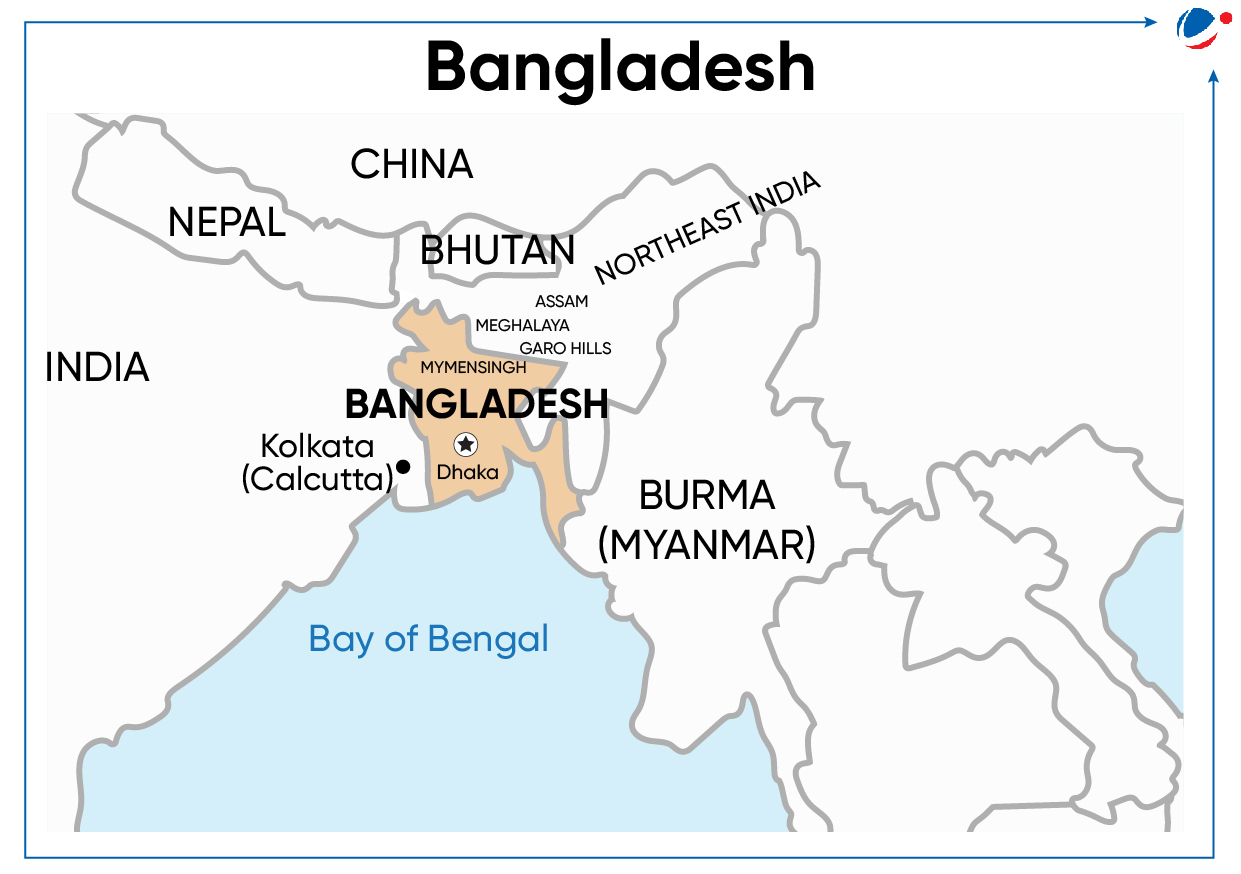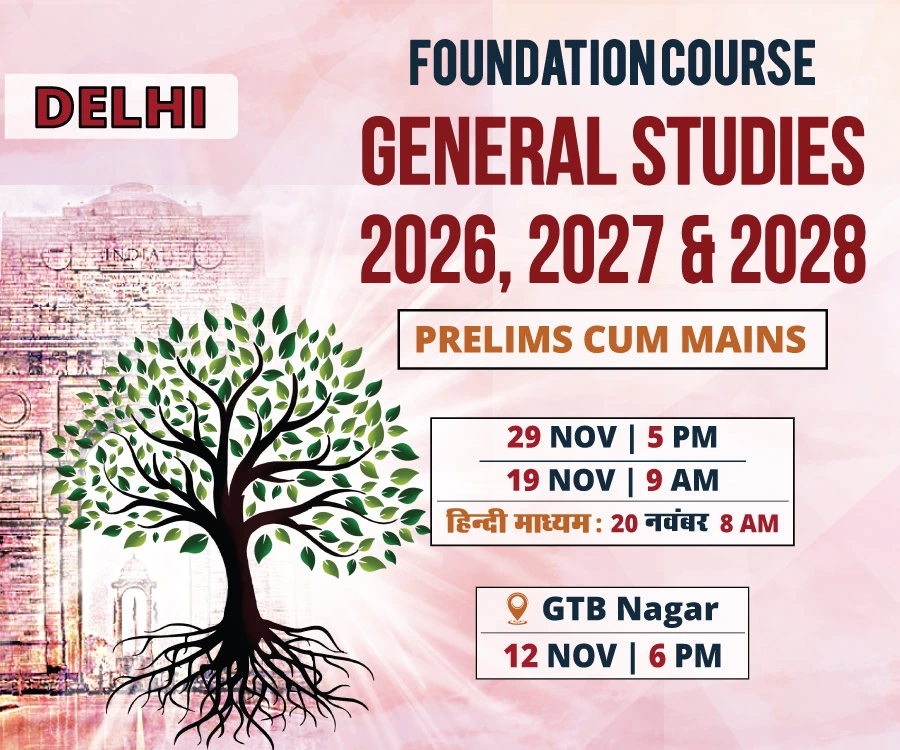Why in the News?
Recently, Prime Minister of Bangladesh paid a state Visit to India continuing the golden chapter of the bilateral relationship between the two countries.

Key outcomes of the Visit
Both countries signed MoU for cooperation in the various areas:
- Shared Vision for 'India-Bangladesh Digital Partnership'
- 'India-Bangladesh Green Partnership' for a sustainable future
- MoU on Maritime Cooperation, Blue Economy and Oceanography
- Commercial agreement between NPCI and Bangladesh Bank for launch of UPI.
- Joint Technical Committee for discussions on renewal of the Ganga Water Treaty
Significance of India- Bangladesh relations
For Both Countries
- Important trade partners: Bangladesh is India's biggest trade partner in South Asia and India is the second biggest trade partner of Bangladesh in Asia.
- Bilateral trade stands at USD 14.01 billion (2023-24).
- Security and Border Management: Both countries actively cooperate on police matters, anti-corruption activities and issues of illicit drug trafficking, fake currency, human trafficking, among others.
- Examples of Defence Cooperation: Military exercises like SAMPRITI and MILAN.
- Peaceful and cooperative border managements: Both countries cooperate for the security of 4,096 kms long international border focusing on border fencing, joint inspection of boundary pillars, etc.
- Land Boundary Agreement (2015) and Delimitation of Maritime boundary are examples of peaceful resolution of boundary disputes.
- Convergence for Sub-Regional Cooperations: Both countries have share vision for the Indo-pacific in terms of maritime security and development of ocean economy.
- Engagement at multiple multilateral platforms: E.g. SAARC, BIMSTEC, BBIN (Bangladesh, Bhutan, India, Nepal), IORA.
- Enhanced Connectivity: E.g. Protocol on Inland Waterways Trade and Transit (PIWTT), operationalization of Agreement for the usage of Chittagong and Mongla Ports
- Cultural and People to People Relations: The Indira Gandhi Cultural Centre and the Indian Cultural Centre in Dhaka both play an important role in celebration of common cultural links.
Significance for India
- Internal connectivity: Easier access to India's North-Eastern states. E.g. Akhaura-Agartala cross-border rail link
- Regional integration: Bangladesh is situated at the convergence of our 'Neighbourhood First' Policy, Act East Policy, Vision SAGAR and Indo-Pacific Vision.
- Help in India's vision for regional leadership: By countering China's assertive regional presence.
Significance for Bangladesh
- Developmental partnership: In last 8 years, India has extended ~US$ 8 billion of Lines of Credit (LOC) for Bangladesh.
- Human Resource development: India trains Bangladesh's Civil Service officials, police officials
- Humanitarian assistance and disaster relief (HADR): Vaccine Maitri (Covid-19 vaccines)
Challenges in Bilateral Relationship
- River Water Dispute: Absence of proper mechanism for sharing of interstate waters. E.g. Teesta.
- Role of China: China is Bangladesh's strategic partner and its largest arms supplier. Moreover, military exercises such as China-Bangladesh Golden Friendship 2024 further raise concerns for India.
- Internal Security Issues: Illegal migration from Bangladesh as well as from Myanmar (E.g. Rohingyas) have been causing conflicts in India, especially in the Northeastern region.
- Rising Radicalization and ill treatment of minorities in Bangladesh: It could impact security of Bangladesh with consequences for India as well.
- Impact of India's domestic policies: Policies like Citizenship Amendment Act (CAA) and National Register of Citizens (NRC) may affect India-Bangladesh relations.
Recent developments in India-Bangladesh Bilateral Relations
|
Steps to be taken
- Early commencement of negotiations for a Comprehensive Economic Partnership Agreement (CEPA), early operationalization Special Economic Zones (SEZs) offered by Bangladesh to India.
- Hydro diplomacy and conclusion of Water Sharing Treaty especially Teesta to resolve transboundary river management.
- Joint Rivers Commission can be used to formulate framework for interim water sharing.
- Expansion of power and energy collaboration to develop intra-regional electricity trade.
- Acceleration of Connectivity Project can yield 172 % increase in India's exports to Bangladesh. (World Bank, 2021).
- E.g. Early operationalization of the BBIN Motor Vehicle Agreement
- India should envision Bangladesh as major anchor for regional and sub-regional integration under the BIMSTEC, SAARC and IORA architectures and also promote common interests of Global South.
- Conclusion of new Framework Agreement for Development Partnership to expand reach of projects and programmes.
- Cross border immigration management through digitalization at grass root level.
Conclusion
India-Bangladesh ties should move to next level, based on Shared Vision of Connectivity, Commerce and Collaboration. By recognizing each other as indispensable partners, both can realize their respective national development visions of "ViksitBharat2047" and "Smart Bangladesh Vision 2041".









